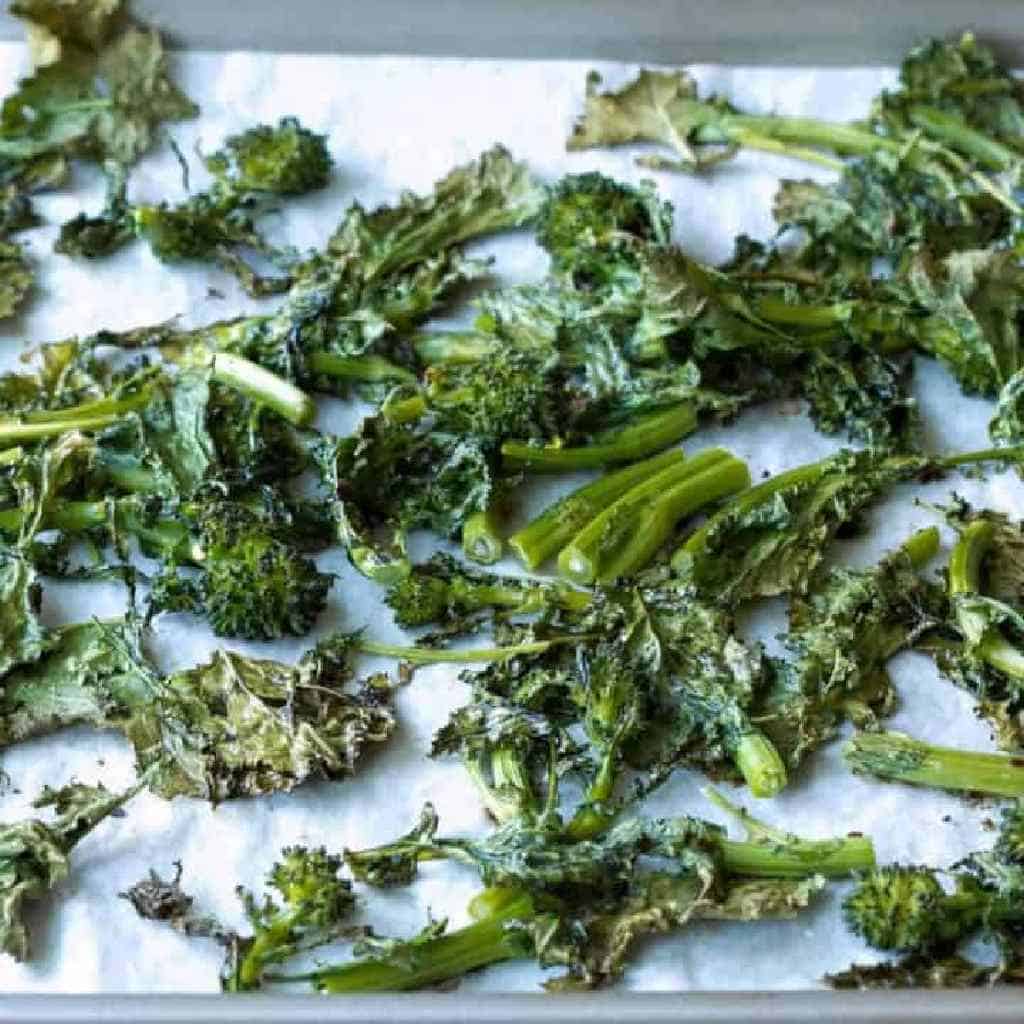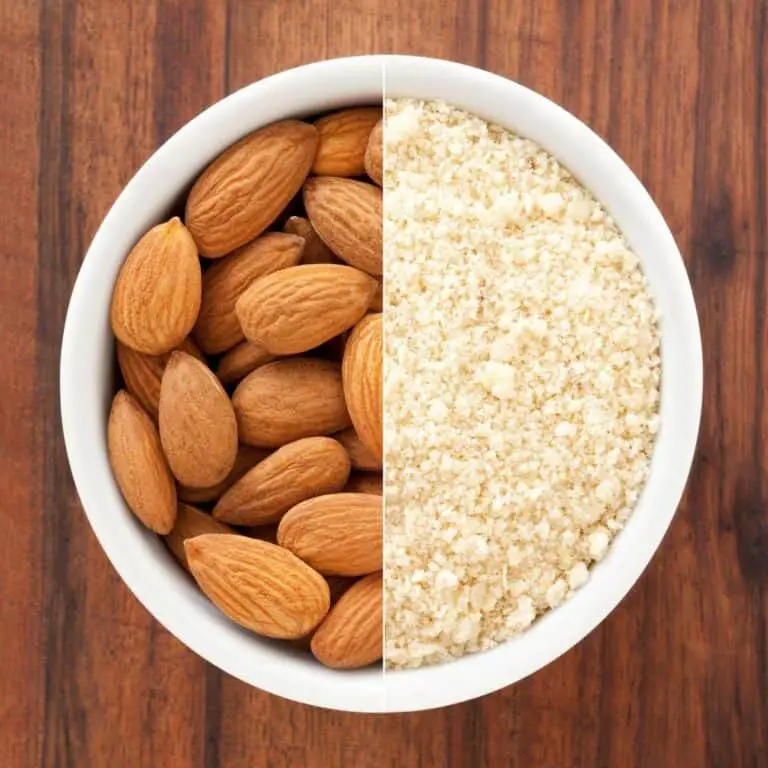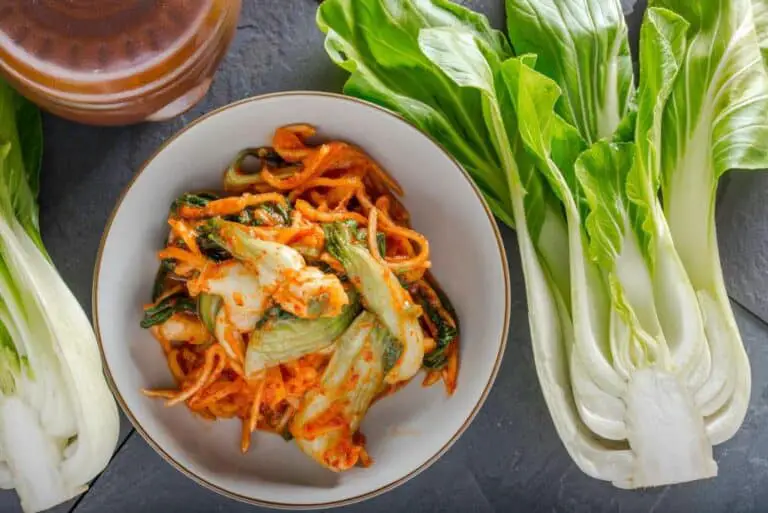What Do Broccoli Leaves Taste Like? From Bitter to Sweet, Worth Trying

Broccoli is a beloved vegetable known for its distinctive taste and numerous health benefits. While most people are familiar with the florets and stems of broccoli, the leaves are often overlooked and underestimated. However, broccoli leaves are not only edible but also offer a unique flavor profile that can add depth and variety to your meals.
In this article, we will delve into the world of broccoli leaves and explore their taste profiles, culinary uses, and nutritional benefits. From bitter to sweet, let’s uncover the flavors hidden within these verdant leaves.
So, if you’re ready to embark on a taste adventure, don’t miss out on the versatile flavors of broccoli leaves. From bitterness to earthiness, and a delightful touch of sweetness, these leaves have it all. Get creative in the kitchen, experiment with various cooking methods, and let your taste buds be your guide.
What Do Broccoli Leaves Taste Like? (Flavor Profile of Broccoli Leaves)
When consumed raw, broccoli leaves offer a unique flavor experience. They possess a hint of bitterness, which is balanced by subtle sweetness and earthy notes. The bitterness is milder compared to other leafy greens like kale or collard greens, making it more approachable for those who are not fond of overly bitter flavors. The texture of raw broccoli leaves is tender and slightly crisp, adding a delightful crunch to dishes.
Broccoli leaves possess a flavor that is reminiscent of their more well-known counterparts, the florets and stems. However, there are some notable differences in taste. The flavor of broccoli leaves can vary depending on their maturity, growing conditions, and how they are prepared. Let’s take a closer look at the different taste profiles of broccoli leaves.
1. Bitterness
When raw, broccoli leaves tend to have a slightly bitter taste. This bitterness is characteristic of many leafy greens and is often associated with their high nutrient content. Bitterness can vary among different varieties of broccoli leaves, with some exhibiting a milder bitterness compared to others. If you enjoy bitter flavors, you can embrace this characteristic and use it to enhance the complexity of your dishes.
2. Earthiness
Broccoli leaves also have an earthy flavor that is reminiscent of the soil in which they grow. This earthiness contributes to the overall taste experience and pairs well with other ingredients in various recipes. When cooked, the earthy notes become more pronounced, adding depth and richness to the dish.
3. Nuttiness
In addition to bitterness and earthiness, broccoli leaves can also have a subtle nutty undertone. This nuttiness is especially noticeable when the leaves are sautéed or roasted. It adds a pleasant complexity and can complement a wide range of flavors.
4. Sweetness
Contrary to popular belief, broccoli leaves can also exhibit hints of sweetness, especially when cooked. This sweetness balances out the bitterness and adds a delightful contrast to the overall flavor profile. As the leaves mature, they may develop a slightly sweeter taste, making them even more enjoyable to eat.
Cooking Methods to Enhance the Taste of Broccoli Leaves
To fully unlock the potential of broccoli leaves, various cooking methods can be employed. Let’s explore some of these techniques:
- Sauteing: Sautéing broccoli leaves with garlic and olive oil is a simple yet delicious way to elevate their taste. The gentle heat softens the leaves, reducing the bitterness while enhancing their natural sweetness. The addition of garlic and olive oil infuses the leaves with savory flavors, creating a delightful side dish or a flavorful base for other ingredients.
- Blending in Smoothies: Incorporating raw broccoli leaves in smoothies is an excellent way to reap their nutritional benefits while masking any bitterness. When combined with fruits and other leafy greens, the sweetness of the fruits helps balance the taste, resulting in a refreshing and nutritious beverage.
- Stir-fries and Soups: Broccoli leaves can be incorporated into stir-fries and soups, adding depth and texture to these dishes. The leaves wilt quickly when cooked, making them an ideal addition to stir-fries alongside other vegetables and proteins. In soups, the leaves impart a subtle sweetness and contribute to the overall flavor complexity.
Steaming Broccoli Leaves: A Balance of Flavors
Steaming broccoli leaves is a cooking method that strikes a balance between reducing bitterness and preserving their natural sweetness. By steaming, you retain the vibrant green color and maintain the leaves’ texture while reducing the bitter taste. Steamed broccoli leaves can be enjoyed as a side dish or added to salads, pasta dishes, or grain bowls for a boost of nutrition and flavor.
Roasting Broccoli Leaves for a Unique Taste Experience
Roasting broccoli leaves takes their flavor to new heights, providing a unique taste experience. The high heat of the oven transforms the leaves, resulting in crispy edges and a caramelized flavor. This method enhances the natural sweetness of the leaves while adding a delightful smokiness. Experimenting with seasonings like lemon zest, chili flakes, or Parmesan cheese can further elevate the taste of roasted broccoli leaves.
Incorporating Broccoli Leaves in Salads and Wraps
Broccoli leaves can be a nutritious and flavorful addition to salads and wraps. When used as a base for salads, they provide a refreshing and slightly bitter bite, complementing other ingredients like tomatoes, cucumbers, and avocado. In leafy green wraps, broccoli leaves add a unique texture and contribute to the overall crispness and freshness of the wrap. Pairing them with protein-rich fillings and a tangy dressing creates a satisfying and well-rounded meal.
Broccoli Leaves in Traditional Cuisines around the World
Broccoli leaves have found their place in traditional cuisines across the globe. In some cultures, the leaves are cherished as much as the florets themselves. Let’s take a culinary journey and explore how broccoli leaves are incorporated in various traditional cuisines:
- Italian Cuisine: In Italy, broccoli leaves are often used in pasta dishes such as orecchiette with broccoli rabe. The leaves are sautéed with garlic, chili flakes, and olive oil, then tossed with pasta for a flavorful and hearty meal.
- Chinese Cuisine: Broccoli leaves are frequently featured in Chinese stir-fry dishes. They are cooked with a combination of garlic, ginger, soy sauce, and other seasonings, resulting in a vibrant and aromatic dish.
- Indian Cuisine: In Indian cuisine, broccoli leaves are utilized in a variety of dishes, such as stir-fried sabzi (vegetable medley), dal (lentil stew), and even in pakoras (fried fritters). The leaves contribute their unique flavor to the vibrant and diverse Indian culinary landscape.
- Mediterranean Cuisine: Mediterranean cuisines incorporate broccoli leaves in various ways. For example, in Greece, they are used in traditional dishes like horta vrasta, where the leaves are boiled and served as a side dish with a drizzle of olive oil and lemon juice.
- African Cuisine: In many African countries, broccoli leaves are cooked similarly to other leafy greens like spinach or collard greens. They are often simmered in flavorful broths and paired with staple foods like rice, plantains, or fufu.
Conclusion
Broccoli leaves offer a unique and versatile flavor profile that ranges from bitter to sweet, with earthy and nutty undertones. Understanding their tastes opens up a world of culinary possibilities.
Whether sautéed, stirred into soups, added to salads or wraps, roasted or grilled, or blended into smoothies, broccoli leaves can bring depth and complexity to your meals. Embrace their distinctive flavors and experiment with different cooking techniques to discover what to do with broccoli leaves with your favorite ways to enjoy these underrated leaves. So, the next time you prepare broccoli, don’t discard the leaves—savor their flavors and elevate your dishes to new heights.






